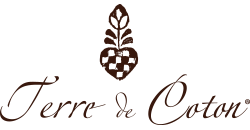The concept of business casual shoes for women has undergone significant transformation over the years. Over the decades, women’s work shoes have transitioned from basic, functional designs to sophisticated and stylish options that cater to both comfort and professionalism.
The world of fashion has undergone significant changes over the years, especially when it comes to women’s footwear.
Furthermore, however, it wasn’t until the early 20th century that loafers began to transition into women’s fashion.
- Late 1800s: The first loafers emerge in Norway, designed primarily for men.
- 1920s: Women’s fashion begins to adopt loafers, influenced by the rise of the flapper movement.
- 1930s: Loafers become more widely accepted in women’s casual wear, showcasing a blend of comfort and style.
Key Milestones
As women’s loafers gained traction, several key milestones marked their evolution, driven by changing societal norms and fashion trends.
- 1940s: The classic penny loafer is introduced, becoming a staple in women’s wardrobes.
- 1950s: Designers like Gucci popularize the loafer with the introduction of the horsebit loafer.
- 1960s: The mod fashion movement incorporates loafers into bold and colorful outfits, appealing to a younger audience.
Major Updates
The 1970s and 1980s brought significant changes to women’s dress loafers, as fashion became more experimental and diverse. women’s comfy work shoes
- 1970s: Platform loafers emerge, adding height and a touch of glamour to the classic style.
- 1980s: The rise of power dressing leads to loafers being embraced in corporate environments, symbolizing professionalism.
- 1990s: Chunky and embellished loafers gain popularity, reflecting the grunge and minimalist trends of the era.
Current Version
Today, women’s dress loafers are available in various styles, materials, and colors, appealing to a wide range of fashion preferences. This article explores the journey of business casual shoes for women, highlighting key milestones and updates that have shaped their evolution.
Early Days
In the early 20th century, women’s footwear was primarily focused on function rather than fashion. The modern landscape includes:
- Diverse Styles: From ballet flats to stylish sneakers, women now have a plethora of options.
- Innovative Materials: Brands are utilizing lightweight and breathable fabrics that offer support and comfort.
- Inclusivity: Shoe lines are increasingly accommodating a variety of foot shapes and sizes, promoting a more inclusive approach to fashion.
What’s Next?
The future of business casual shoes for women looks promising, with several trends anticipated to shape their evolution:
- Technology Integration: Expect to see smart shoes that track comfort levels and foot health.
- Customization: More brands are likely to offer customizable options to meet individual preferences.
- Sustainability Focus: The push for sustainable practices will continue, with an emphasis on recyclable materials and ethical production.
In conclusion, the evolution of business casual shoes for women reflects broader societal changes, from the early focus on functionality to the modern emphasis on style and comfort. Initially, shoes served a functional purpose, primarily focused on protection and durability rather than comfort or style.
Equally important, here are some key points from the early history:
- Ancient Civilizations: Early shoes were made from materials like leather and fabric, reflecting the available resources and climate.
- Middle Ages: The design evolved, with ornate styles emerging, but comfort was still not prioritized.
- Renaissance Era: Shoes became more decorative, with the introduction of heels, which often compromised comfort.
Key Milestones
As society progressed, so did the design and functionality of women’s dress shoes. Some current trends include:
- Versatile Flats: Stylish flats that can transition from office to evening wear are popular among professionals.
- Stylish Sneakers: Sneakers designed with sleek silhouettes and premium materials are now widely accepted in corporate environments.
- Block Heels: Offering a balance between height and comfort, block heels have become a favorite among office-goers.
What’s Next?
As we look to the future, the evolution of cute office shoes is likely to continue. Notable updates include:
- Use of Technology: The introduction of memory foam and cushioning technologies in the 1980s and 1990s revolutionized comfort.
- Design Innovations: Brands began to focus on ergonomic designs, including arch support and flexible soles.
- Sustainable Materials: In the 2000s, eco-friendly materials became more prevalent, appealing to environmentally conscious consumers.
Current Version
Today’s comfortable black dress shoes for women are a blend of style, comfort, and sustainability. As comfort and style continue to blend, dress sneakers will likely remain a fundamental component of modern work attire.
